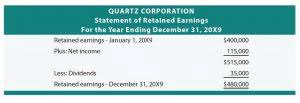Types of Liability Accounts List of Examples Explanations Definition

These utility expenses are accrued and paid in the next period. A note payable is a debt to a lender with specific repayment terms, which can include principal and interest. A note payable has written contractual terms that make it available to sell to another party. The principal on a note refers to the initial borrowed amount, not including interest. In addition to repayment of principal, interest may accrue.

Liability Accounts
- This method was more commonly used prior to the ability to do the calculations using calculators or computers, because the calculation was easier to perform.
- Perhaps at this point a simple example might help clarify the treatment of unearned revenue.
- A noncurrent liability is due in more than one year or outside a standard company operating period.
- The monthly interest rate of 0.25% is multiplied by the outstanding principal balance of ?
- When an investor buys stock in a company, typically voting rights are assigned and some level of control by management is given up.
- 4 sales tax is a current liability until distributed within the company’s operating period to the government authority collecting sales tax.
LO 3.2Consider the following accounts, and determine if the account is an asset (A), a liability (L), or equity (E). (Figure)Pianos Unlimited sells pianos to customers. The company contracts with a supplier who provides it with replacement piano keys. There is an agreement that Pianos Unlimited is not required to provide cash payment immediately, and instead will provide payment within thirty days of the invoice date.
Liability Accounts List
Companies may issue long term bonds to finance growth or expansion of the business as an alternative to issuing stock. They will do this for a variety of reasons. When an investor buys stock in a company, typically voting rights are assigned and some level of control by management is given up.
v2 Principles of Accounting — Financial Accounting
(Figure)Consider the following situations and determine (1) which type of liability should be recognized (specific account), and (2) how much should be recognized in the current period (year). LO 3.5Indicate whether each account that follows match the common liability account with its correct description. has a normal debit or credit balance. LO 3.4Identify whether ongoing transactions posted to the following accounts would normally have only debit entries (Dr), only credit entries (Cr), or both debit and credit entries (both).
This obligation to pay is referred to as payments on account or accounts payable. No written contract needs to be in place. The promise to pay can either be oral or even implied.

Examples of Current Liabilities
- This contract provides additional legal protection for the lender in the event of failure by the borrower to make timely payments.
- Reporting of cash flows means a statement of cash flow which is a financial statement.
- Companies may issue long term bonds to finance growth or expansion of the business as an alternative to issuing stock.
- Equity represents the amount invested in the business, either by the promoters of the company or by external shareholders.
- In other words, the creditor has the right to confiscate assets from a company if the company doesn’t pay it debts.
The company expects that a large percentage of its sales will occur during a short timeframe and borrows against those future earnings. The assets are what the company owns, and the liabilities represent what the company owes. Equity represents the amount invested in the business, either by the promoters of the company or by external shareholders. The total assets must match total liabilities plus equity. For example, let’s say you take out a car loan in the amount of ? The annual interest rate is 3%, and you are required to make scheduled payments each month in the amount of ?
Common Liabilities
Some common unearned revenue situations include subscription services, gift cards, advance ticket sales, lawyer retainer fees, and deposits for services. Under accrual accounting, a company does not record revenue as earned until it has provided a product or service, thus adhering to the revenue recognition principle. Until the customer is provided an obligated product or service, a liability exists, and the amount paid in advance is recognized in the Unearned Revenue account. As soon as the company provides all, or a portion, of the product or service, the value is then recognized as earned revenue. Common current liabilities include accounts payable, unearned revenues, the current portion of a note payable, and taxes payable. Each of these liabilities is current because it results from a past business activity, with a disbursement or payment due within a period of less than a year.
Liability accounts
